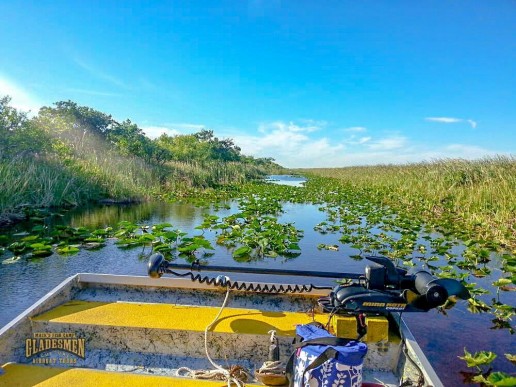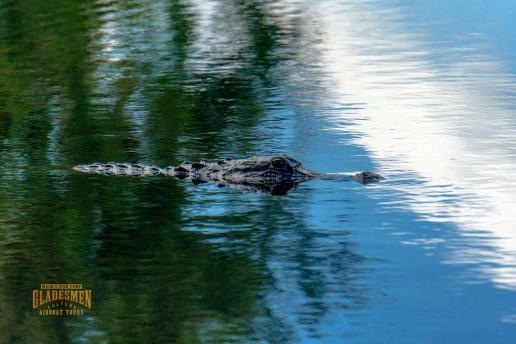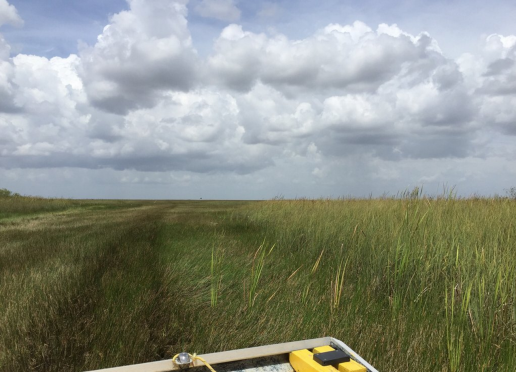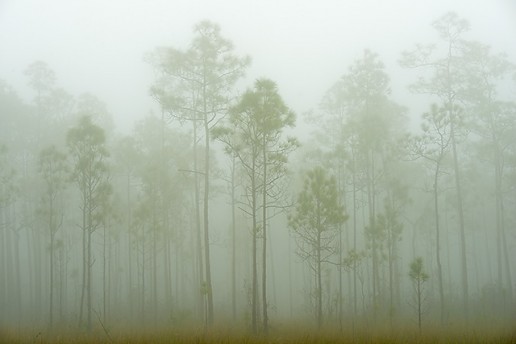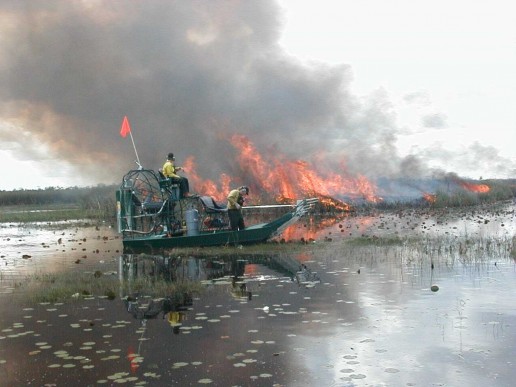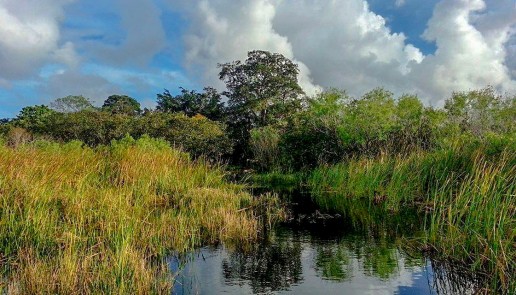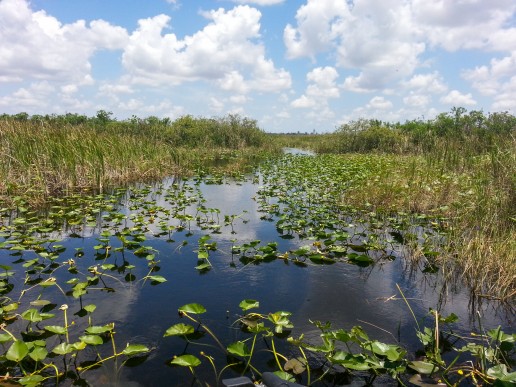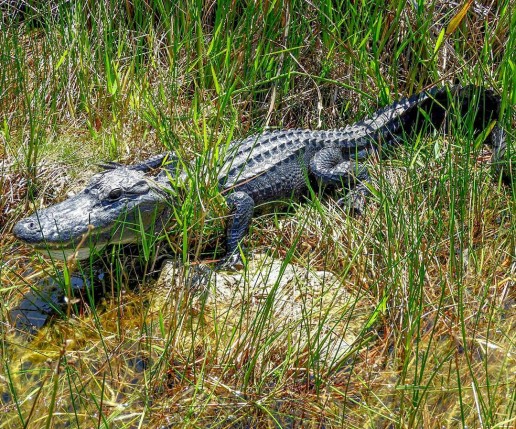Behold Florida's Beauty on an Everglades Eco tour
The Everglades is a mystery to people who may visit Florida, or have only just heard of it. It’s an ecosystem that is home to some of the most unique animal and plant life in the world. On an Everglades eco tour at Mack’s Fish Camp, you get to explore another world that’s hiding in plain sight.
Everglades Ecotourism
So, what is ecotourism? Ecotourism combines the adventure of exploring the beauty of nature with a raised awareness of it. Destinations like the Everglades, with its untouched ecosystem and high biodiversity, offer an experience that’s both fun and educational. Nature enthusiasts and adventurous families alike can expect a great time while learning its secrets. The Everglades has areas so remote that they can only be reached by an airboat, and have remained largely unchanged for centuries.
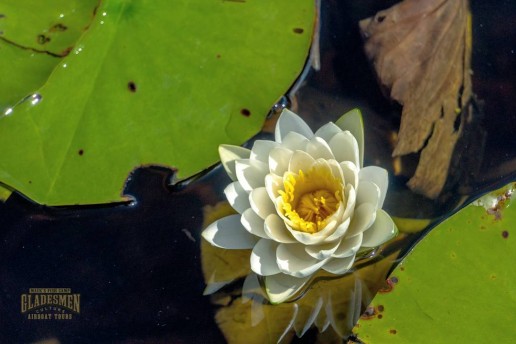
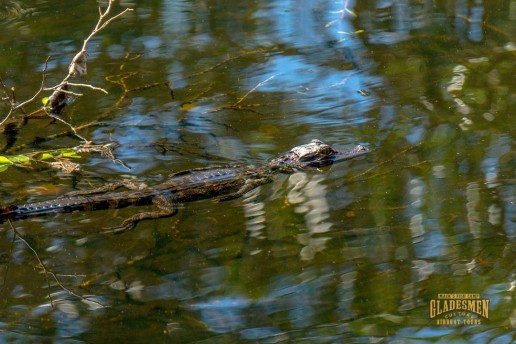
The Fragile Beauty of Florida’s Wetlands
As children we may learn that wetlands are the playground of ducks and frogs, not yet able to see their importance. Wetlands habitats are of vital importance to all life that thrives near it, and the Florida Everglades is no different. Many endangered animal species call it home, and it also provides drinking water to millions of South Florida residents.
Even though it’s an ecosystem fed by floods and shaped by fires year after year, the Everglades are remarkably fragile. In recent years, its protection and its restoration have grown as important issues to Floridians.
Unforgettable Adventure on an Everglades Eco Tour
Offering the chance to see and hear exotic bird species and observe the quiet power of wading alligators up close under an endless sky, the Florida Everglades is a feast for the senses. It is truly the defining natural attraction of Florida, as well as the legacy of the Gladesmen Culture here at Mack’s Fish Camp. If you’d like to take an Everglades eco tour with us or just want to experience an airboat ride in Miami, come on by.
Living with Alligators, A Florida History and How-To
To non-Floridians, the idea of living so close to alligators can sound exciting, scary or just plain wild. The novelty of it can bring unique challenges, too. But much like the endless summer weather, living with alligators is just part of life in Florida.
Alligators all over!
From marshes to rivers and swamps to lakes, alligators have resided throughout Florida for centuries. Spanish settlers & explorers in the 1600’s referred to them as el legarto (“the lizard”), and alligator became the English form of it. Alligators can be found in all 67 counties in Florida.
They’re solitary in nature, and tend to shy away from human contact. But as human populations grow steadily, the potential for interactions often occur. Alligators have been found in neighborhood lakes, backyards, garages, even swimming pools!
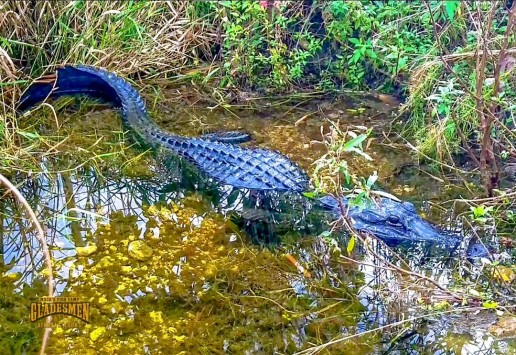
Should you encounter a gator that you believe could pose a nuisance to yourself, your pets, or property, you can call the Nusiance Alligator Hotline at 866-FWC-GATOR (866-392-4286). Alligators under four feet long generally aren’t considered to be a nuisance unless the caller believes it could be a threat. And also keep in mind that, nuisance alligators are killed, not relocated.
Some Alligator Safety Tips
Whether you’re a local living with alligators, or just looking to visit the Sunshine State, here’s some tips to be mindful of regarding gators.
- When camping or fishing, dispose of scraps in trash cans. Don’t discard them in the water, because you may be unintentionally feeding alligators.
- Never feed alligators. Doing so can make the associate people with food and become aggressive.
- Don’t swim outside of designated swimming areas or in waters that might be inhabited by alligators.
- If you’re bitten by an alligator, seek medical attention immediately. Serious infections can result if left untreated.
- And don’t bother alligators. Not only is harassing gators illegal, it can result in injury.
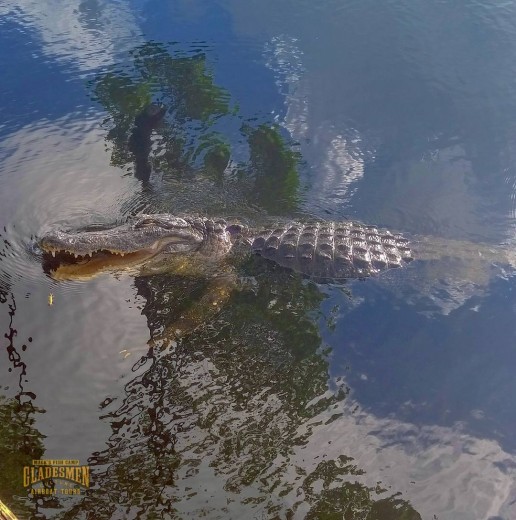
Alligators are a cherished member of not just the Everglades ecosystem, but the state of Florida as a whole. Living with alligators, they seem to pop almost anywhere in the state. But the best place to see them up close is in their natural habitat. Taking an Everglades airboat tour at Mack’s Fish Camp is a fun, safe way to learn about them and the role they place in the environment.
Everglades Habitats: The Sawgrass Marsh
Large areas of the Florida Everglades are covered by freshwater marshes. These flooded habitats have different categories, but the most common one is the sawgrass marsh. What is the importance of this habitat, and what is this abundant plant it’s named for?
What is Sawgrass?
Sawgrass is a slim, tall plant that can grow to over 9 feet high! It’s commonly found in wetlands and along riverbanks in the southern United States. The sawgrass marsh is the habitat that inspired the Everglades’ nickname and title of Marjory Stoneman Douglas’ famous book, “Everglades: River of Grass”.
Despite its name, this Everglades plant is actually a species of sedge, not a grass. But sawgrass is also named for the fine, sharp points that run along its edges. These teeth can cut a person on contact. At Mack’s Fish Camp, we make sure that no one makes contact with it while on an airboat tour.
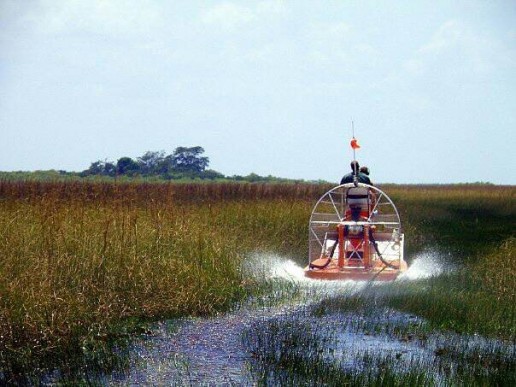
Sawgrass and Everglades Ecology
Sawgrass may not be so kind to human touch, but it’s very good to the environment of the Florida Everglades. In the winter months, migratory bird species eat the seeds produced by the sawgrass. Other bird species and even alligators use this tall, sharp sedge as protection by nesting in the sawgrass marsh.
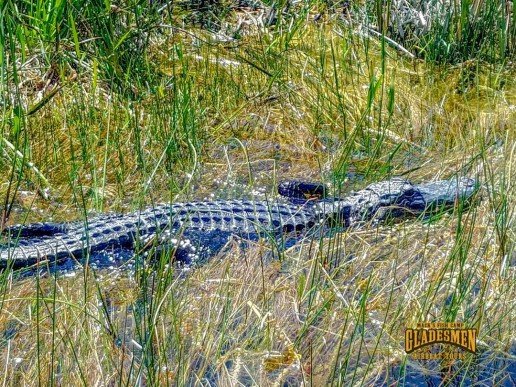
The sawgrass marsh is flooded for much of the year, which can help produce taller and thicker sawgrass. If its growth becomes too thick and dense, it can further slow the sheetflow of the Everglades. During the Everglades dry season, sawgrass can help fuel wildfires. The wet soil which roots the plant allows it to recover while also removing any invading plants or trees from the marsh.
Like much of the flora and fauna found in the Everglades, sawgrass is strong enough to thrive here and help the ecosystem at the same time. Although it’s best to avoid touching it, you can see the River of Grass up close on an Everglades airboat tour at Mack’s Fish Camp.
3 Spooky Everglades Mysteries
Many scary stories have come from all over Florida, and quite a few involve the Everglades. There are sightings of ghosts that aren’t pretty orchids, and disappearances as mysterious as the Skunk Ape. In honor of Halloween, here are some of the strange mysteries associated with the Florida Everglades.
The Lost Patrol, Bermuda Triangle victims?
There have been some aircraft that have vanished over the Everglades. In 1945, a group of five naval planes took off from Fort Lauderdale Naval Air Station for a training mission. All five Grumman Avenger TBM Torpedo bombers lost radio contact and disappeared. Over the years, the wreckage of old military planes has been found in the Everglades. But to date, no trace of Flight 19 has been found, which helped to popularize the legend of the Bermuda Triangle.


The Everglades Ghost Ship
Centuries ago, pirates terrorized the seas from the Gulf of Mexico to the Caribbean, attacking merchant ships. One such attack involved a pirate ship overtaking a merchant vessel off the Florida coast. The chase angered the pirate captain so much that he made the merchant crew walk the plank and made their captain’s wife watch.
Before her turn to walk she cursed all pirates, and suddenly rough waves pushed the pirate ship deep into the Everglades. The story goes that the cursed ship and the ghosts of its crew wander the swamps and marshes to this day!
The Ghosts of Flight 401
In December of 1972, an Eastern Airlines flight bound for New York crashed into the Everglades after taking off from Miami. The crash was likely caused when the autopilot was accidentally shut off by a while investigating a burned out indicator light. In the years after the tragic crash, sightings were reported of ghostly-looking men on Eastern flights.
The descriptions given of the men sounded very similar to those of the captain and flight engineer of Flight 401. Rumor has it that Eastern Airlines installed good parts from the wrecked plane into other planes in their fleet.
Bermuda Triangle and pirate ghosts aside, the Everglades itself holds a great sense of mystery. It’s this mystery that gives weight to the stories and legends born here. But when you take an airboat ride at Mack’s Fish Camp, there’s nothing to be scared of. It’s just the side Florida very few people get to see.
The Benefits and Dangers of Fire in the Everglades
As we reach the end of the Everglades wet season, there’s much to look forward to. Cooler temperatures and decreased rainfall will drive out the mosquitoes and invite migratory and wading birds back to the marshes. But the return of the dry air also brings with it the increased potential of fire in the Everglades.
The 2017 dry season saw some of the most wildfires in years. The state of Florida has had over 2,000 fires so far this year, with 125 fires burning an estimated 31,000 acres through April. The fire in the Everglades was so bad in April that it came right to the doorstep of Mack’s Fish Camp! Thankfully, through the efforts of the Department of Forestry, our historic family home was spared from the encroaching blaze!
Everglades Fires: Friend or Foe?
Despite the hazards fires pose to animal and human Florida residents alike, they can also be beneficial to Everglades ecosystems. For many years, fire in the Everglades has come from lightning strikes and humans. The health of the different Everglades plant species in them relies on the extreme differences between the two seasons here. Just as the summer rains revive the Florida wetlands, fire in the Everglades helps plant life thrive.
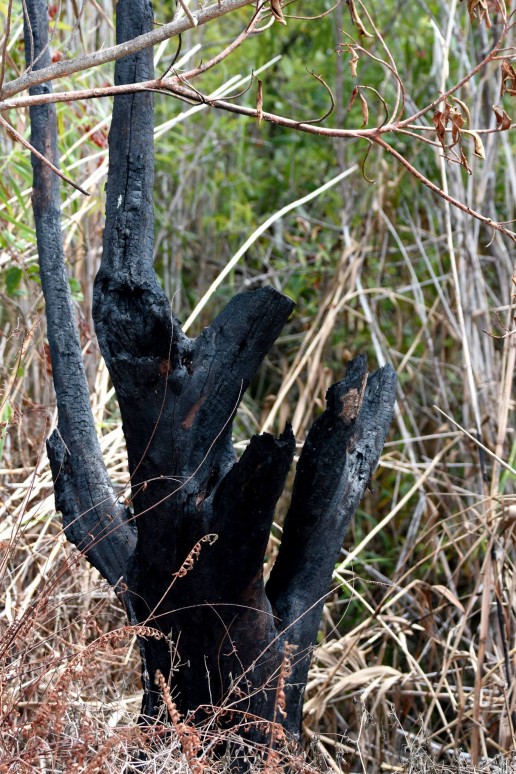
How fire affects different Everglades habitats
The Pine Rocklands habitat has a need for fire that is two-fold. Hammock species of plants that grow there can block sunlight, which can harm smaller plants and even the taller pines. Fires can help clear overgrowth to let all plants thrive, and the extreme heat helps pines seed the ground.
The trees of the Pinelands are very fire-resistant because of their thick bark. The hardwood hammock can withstand fire somewhat, because they sit on wet soil and are very humid. Fires that occur in the coastal prairies are usually started by lightning , and prevent exotic plant encroachment toward freshwater marshes.
The Wet Prairie and Sawgrass Marsh
The habitats where fire is the most vital are the wet prairie and sawgrass marsh. The Everglades is a river, and the main sheet flow moves through these habitats, and is improved by the reduction of sawgrass. Sawgrass fires also burn off flammable plants near tree islands and hardwood hammocks, which are more vulnerable to fire.
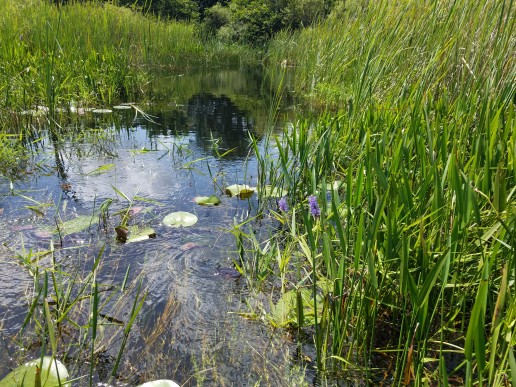
Because of its destructive potential to people and the environment, fire in the Everglades can be quickly written off as a monster. State officials and fire departments keep watch over and fight fires across the state, protecting buildings and the environment alike from them. But fire can also be beneficial to this ecosystem, especially when used in prescribed burns by these officials.
The complexity of the Florida Everglades ecology is a lot to explain, but beautiful to see firsthand on airboat ride. At Mack’s Fish Camp, you can learn about these diverse environments while seeing them up close.
5 Everglades Fish You Can Encounter on a Fishing Charter
It’s no secret that South Florida is a haven for saltwater and freshwater fish alike. But, many people are surprised to find out that the River of Grass is flush with fish! Yes, the Florida Everglades has some of the best bass fishing in America. When you set off on our bass fishing guide service at Mack’s Fish Camp, there are many other fish you could see! Here’s some info on some species of Everglades fish.
Bowfin
A long, stout fish, bowfins are strong fighters, and have been known to snatch lures from unsuspecting anglers! They have long dorsal fins and rounded tailfins. At first glance, they can be mistaken for a bullseye snakehead fish.
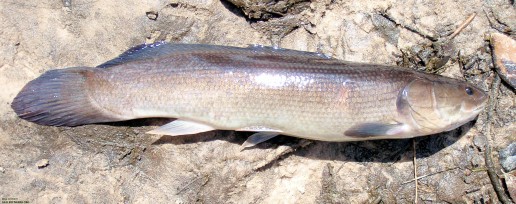
Largemouth Bass
The largemouth bass is the most popular game fish in North America. They’re also the state freshwater fish of Florida, and with good reason. These bass are found statewide, and are found near vegetation. A big catch for a largemouth bass in Florida starts around 24 inches long and weigh 8 pounds!
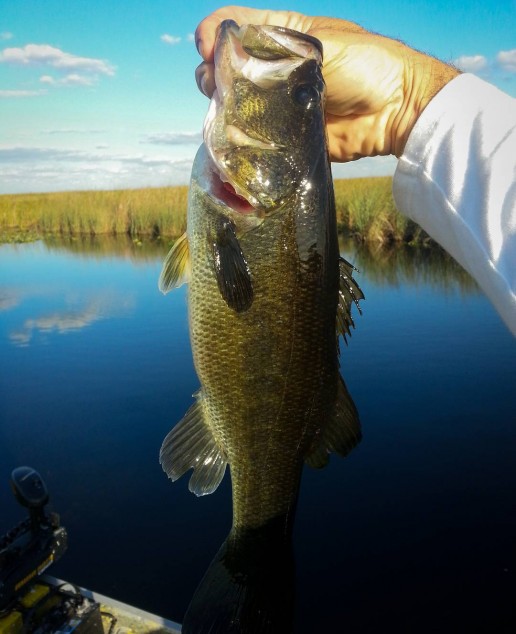
Florida Gar
This long, torpedo-shaped fish is generally not considered a game fish. But it’s aggressive eating habits can offer a good fight. Its long snout and thick, armored scales give the Florida Gar an almost prehistoric look. It also breathes through gills and an air bladder, and must surface periodically for air.
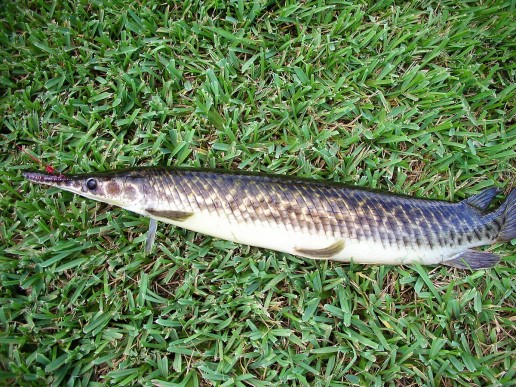
Channel Catfish
Identified by their whisker-like barbells and forked tail, channel catfish are the most –fished catfish species in America. They are a popular catch for food, and are attracted to strong odors. Shrimp or other commercial stink baits are recommended for them.
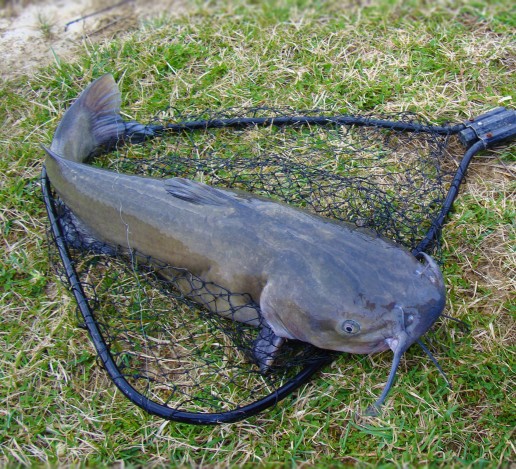
Tarpon
A very popular sport fish in South Florida, tarpon are found in both saltwater and freshwater habitats. When it’s not quite warm yet in during spring, tarpon are very abundant in the Everglades, especially the younger ones. They can grow quite large, weighing over 200 pounds!
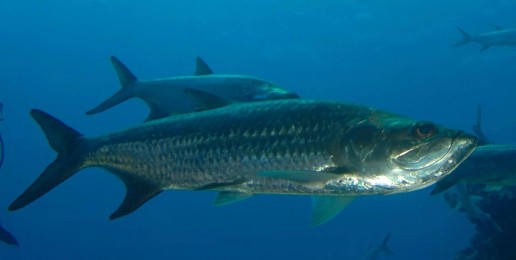
How weather conditions affect Everglades fish
The Everglades dry season (December though April) often leads to extended periods of drought, and lower water levels. While this can concentrate fish in gator holes, sloughs, and canals, it leaves them exposed to predators in marshes. Their numbers are replenished and more abundant during the flooding of the Everglades wet season, though much less concentrated.
The fish in the Everglades are vital to this ecosystem. They are a primary food source for alligators, birds, and larger fish. Fish also help manage Everglades insect populations. Whether you explore on our bass guide service or just take an Everglades tour on an airboat, you’re sure to see plenty of them!
Experience Summer Adventure Year-Round in the Florida Everglades
There are plenty of reasons why South Florida is a popular travel destination. The gorgeous beaches and lively nightlife make visitors balk at the theme parks just over the horizon. A big factor for many tourists is the abundance of warm, sunny weather that seems to last all year. There’s only one experience in South Florida that’s as unique as the climate here: taking an Everglades tour!
Seasons in the Everglades
It definitely feels like summer in Florida for most of the year. But, the Everglades doesn’t really have a summer, or even four distinct seasons, just two! There is the wet season, which lasts from May through November, and the dry season, lasting from December through May. During the Everglades wet season, the Florida wetlands are replenished by heavy rains, and alligators nest and hatch their young. The dry season is defined by little rainfall, and peak activity of several species of Everglades birds like herons and egrets.
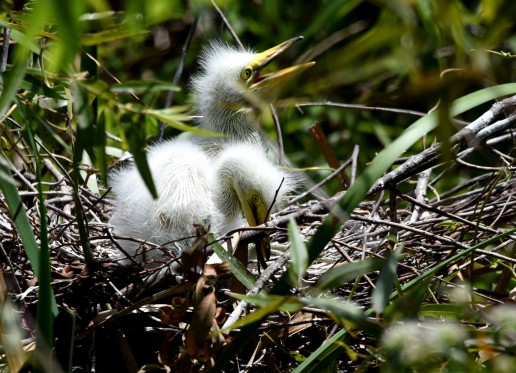
When is the Best time to Visit the Everglades?
The best time to take an Everglades tour can be a matter of preference. The dry season offers cooler temperatures, and the lower water levels and bird nesting concentrate Everglades wildlife into smaller areas. But many tourists visit South Florida at this time, and it gets very busy. During the wet season there are fewer crowds, but also higher temperatures and frequent rain.
Despite there being only two seasons in the Everglades, there are transition periods between them. Starting in October, a noticeable shift starts to occur, the rains become less frequent, and the heat is less intense. Also, a decrease in humidity brings a decrease in pesky, biting mosquitoes!
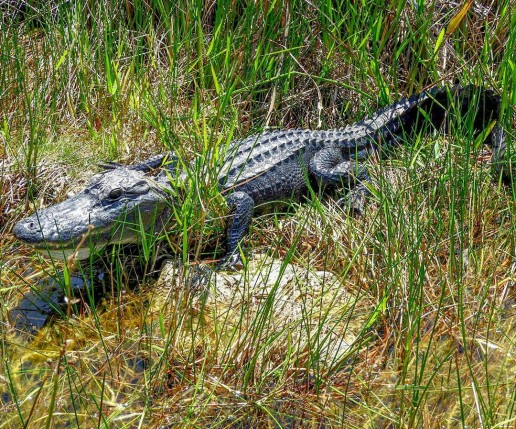
The Everglades wet season can get too hot for some, and the dry season can bring too many people. But, maybe there’s a time of year that’s just right for you. Miami in the fall doesn’t see the leaves changing colors, but the license plates start to! So before the holidays take a bite out of your budget, and snowbirds start arriving from across America and beyond, consider taking an Everglades tour in Miami this fall at Mack’s Fish Camp.
5 (Debunked) Alligator Myths
Of all the many animals that live in the Florida Everglades, none are as iconic as the American alligator. Second only to the nesting wading birds of the dry season, alligators are the most popular species of Everglades wildlife. You can learn much about them on alligator tours at Mack’s Fish Camp. But for now, we’d like to clear up a few alligator myths.
Myth #1 – Alligators are slow
Alligators are mostly seen as either floating in water, laying about, or casually walking across a gold course. But, don’t be fooled. Because alligators are ambush predators, they rely on quick bursts of speed to catch their prey. Though not fast, alligators are capable of moving at 10-15 miles per hour from a standing position. In the water, they can swim nearly twice as fast because of their muscular tails!
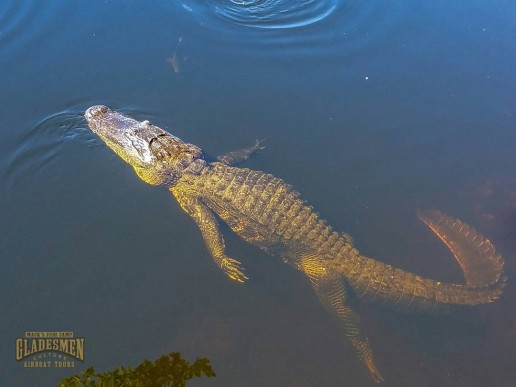
Myth # 2 – Alligators are at the top of the Everglades Food Web
While they definitely close to it, the American alligator doesn’t sit at the top of the Everglades food web. The Burmese python, an exotic invasive species, is now the apex predator of the Everglades, and preys on alligators. Of the alligator myths listed, we wish this one was true, as Burmese pythons have become a significant threat to Everglades wildlife.
Myth # 3 – Alligators are vicious
Intimidating as they look, alligators aren’t bloodthirsty. Their cousins the crocodile, particularly Nile crocodiles, are known as aggressive potential man-eaters. Alligators are quite shy, and try to avoid humans. But, they can become aggressive if you’re near their nest, or if they have been fed by people. Feeding alligators makes them associate people with food, so if you encounter a wild alligator, don’t feed it!
Myth # 4 – Gators can’t climb
Again, that seemingly lazy log with eyes shouldn’t be underestimated. Young alligators are more agile, but adult alligators are very strong and muscular. Adult alligators rely on a combination of their sharp claws and long tails to climb trees and even fences! They can use this ability to pursue prey up trees, though they prefer to “work smart, not hard” and wait under the tree.
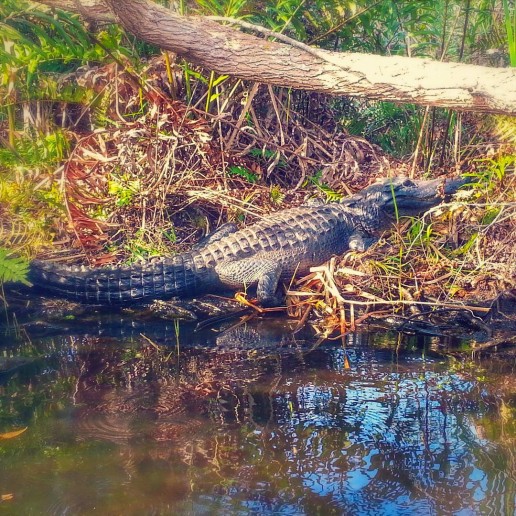
Myth # 5 – Alligators can’t survive without warm weather
Alligators are reptiles, and not only are they cold-blooded, they can’t regulate their body temperature on their own. The Florida Everglades is perfect for them, because alligators thrive in temperatures between 82 and 92 degrees. However, every so often the Everglades is within reach of cold winter weather, but alligators are ready for it. When faced with temperatures of 55 degrees or lower, alligators go into a dormant state, slowing their heartbeat to 1 to 2 beats per minute!
Alligators are amazing and powerful creatures, so it’s easy to fall victim to some of these alligator myths. But with a good balance of curiosity and skepticism, you can discover the truth about these awesome animals. The alligator tours at Mack’s Fish Camp let you see them up close in their natural habitat. You’ll also learn more about alligators and also the Everglades ecosystem from Florida Gladesmen that have lived alongside them for generations.
Hurricane Irma Update
Just two weeks ago, much of Florida witnessed the power of mother nature when Hurricane Irma made its landfall. Despite being spared the widespread devastation seen by the Florida Keys, South Florida took its licks, too. However, Mack’s Fish Camp is still standing!
As of this past weekend, we finally have power back, but have still been offering airboat rides during the outage. Not only were we still standing, but up and running as well. That’s right, we have still been running private airboat tours and offering our bass fishing guide service in the Everglades. In fact, our airboats have made for formidable leaf blowers, helping us with clearing much of the foliage.
Like much of South Florida, our trees sustained the heaviest damage. But our old structures are still intact, including our home, for which we are very grateful. Looking at the devastation experienced by people in Texas and the Keys, we feel blessed to still have our home and each other.
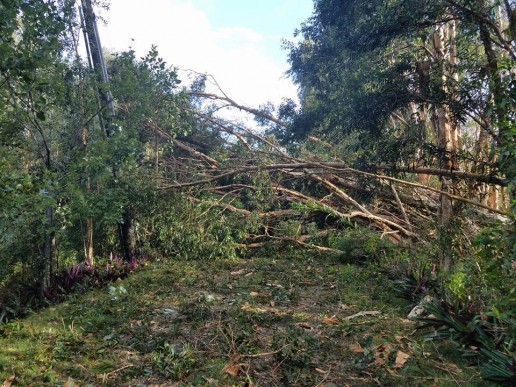
No storm can take down Gladesmen Culture
As a family of Gladesmen, we thrive in times like these through our toughness, tenacity, and a bond that no wind can uproot! But as a small, family-owned business, Mack’s has stayed alive through word-of-mouth, and we sure could use some now.
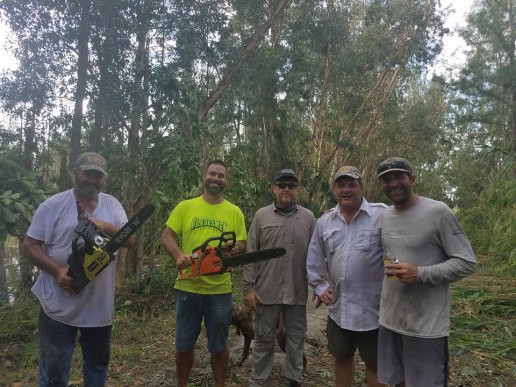
We took a hit with this storm. So, now we’re looking to you: our friends, family, and fans, to spread the word about this little piece of heaven we call home. Recommend us to a friend who’s never seen the Everglades, or bring them out here with you for an airboat ride.
Or even if you’re just curious to see the result of the awesome power of nature against its otherwise calm beauty, come pay us a visit. Rest assured that as long as the Florida Everglades are around, you can bet us Gladesmen will be, too!
Wildlife Profile: Spiders in the Everglades
Spiders probably aren’t the first animal that comes to mind when you think of the Florida Everglades. But they are among the most abundant of Everglades wildlife, with 20,000 spiders for each of the 2 million acres here. Most of them go about their business unseen, and many are too small to be seen!
Spiders in the Everglades can be found hiding in the underbrush or are easily spotted by the webs they make in trees. Spiders are arachnids, not insects, so they all have eight legs instead of six, no antennae, and their bodies are divided into segments.
As scary as they look to some people, most spiders aren’t a threat to us, and only some are venomous. In fact, spiders are a cherished part of the Everglades food web, feeding on nuisance insects. Here are some species of spider you may spot on an Everglades tour at Mack’s Fish Camp.
Banana Spiders
Banana spiders are the species you’re most likely to see when you visit the Everglades. While the males are smaller and more dark-colored, the more colorful females measure three inches long, and are among the biggest spiders in North America.
These spiders are a type of orbweaver, and spin large circular webs to catch prey. A female’s web is made of golden silk similar to its color, and is three feet long. They feed on insects of all sizes, from mosquitoes to dragonflies. Banana spiders aren’t aggressive, and their bite isn’t harmful to humans.
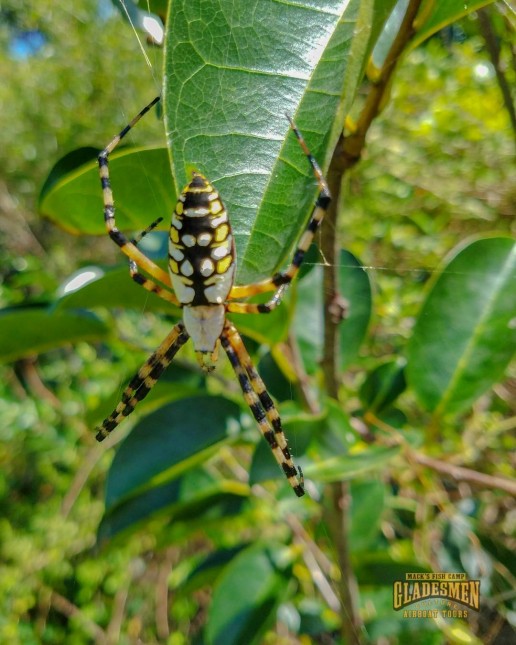
Fishing Spider (dolomedes triton)
This aquatic spider species spends nearly all of its time floating on or near water. In fact, fishing spiders can walk on the water’s surface and even dive underwater to catch prey. They hunt insects, tadpoles, even fish by sensing vibrations in the water, and then eat on dry land. Fishing spiders are dark gray to brown-colored, with two pale lines running the length of their bodies. Because the Everglades is a mostly aquatic ecosystem, fishing spiders are right at home in the sawgrass marshes and wet prairies.
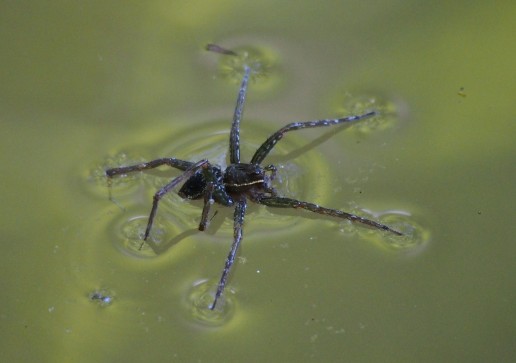
Red Widow
The red widow spider is a venomous spider with an orange-red body and a black abdomen with red spots. They’re fairly large, reaching 1.5 inches in length. Unlike its cousin, the black widow, it hasn’t been known to have ever bitten a person. However, they are known to have very potent venom. Red widows are endemic to Florida, found in the pine scrubs and pine rocklands. They make their nests in saw and scrub palmetto plants, and feed on large insects like crickets.
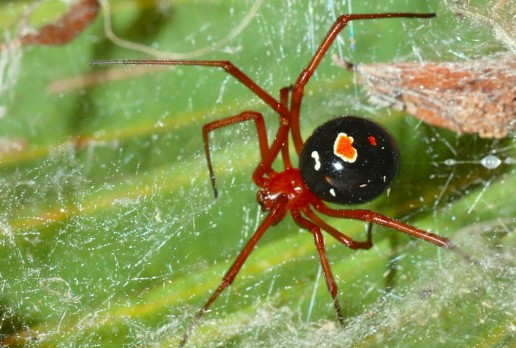
Brown Recluse
The brown recluse is one of the most venomous spiders in the Everglades, with venom as strong as the black widow’s. These quarter-sized arachnids not only make their webs, but seek out prey on the ground, such as cockroaches. Brown recluse spiders are not aggressive, and reports of them biting humans are rare. But they will bite if pressed up against someone’s skin, by leaning into one or when putting on clothing. Although, the strength of their bite varies, it can cause skin damage, loss of limb, and death.
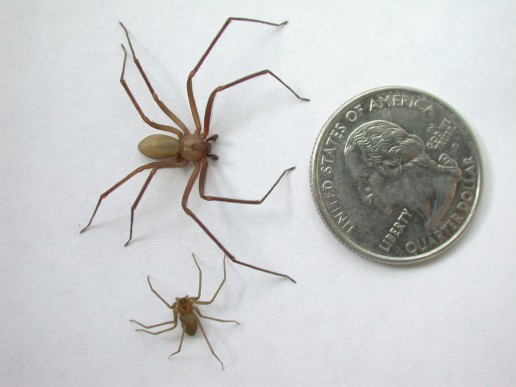
Crab Spiders
These small spiders are named for how they move by scuttling sideways, as a crab would. Most species are dark grey to black to camouflage themselves. Other species are brightly colored to hide inside flowers, wait to ambush their prey. Crab spiders do not spin webs to catch or wrap their prey, but feed immediately after attacking.
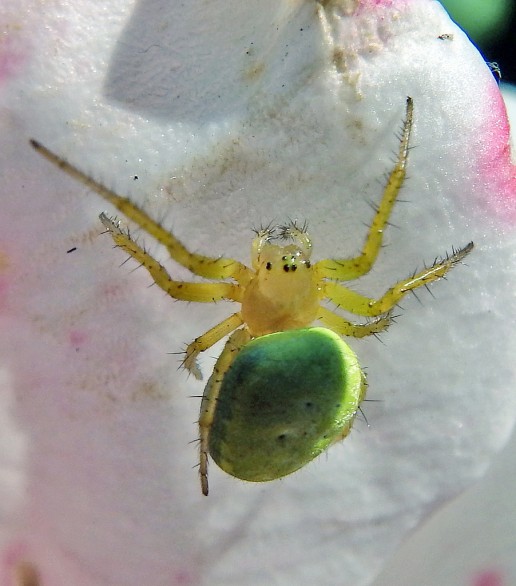
Spot Everglades Wildlife on an Airboat Ride
Spiders in the Everglades serve their role in this ecosystem, no matter how frightening of beautiful you might find them. On a private airboat tour at Mack’s Fish Camp, you’ll get to see them and many other Everglades wildlife species.

